Maybe it’s a function of age; having already heard so much music from my favorite era; or getting kicked off numerous promo lists. But these days, seems like I’m spending more time reading books about rock history than I am listening to newly released rock reissues. I had a lot more trouble filling up my Top Ten of 2014 rock reissues (coming in my next blog post) than my Top Ten of 2014 rock books. There were enough books of note, in fact, that in addition to a Top Ten (which follows below), I’ve also listed a dozen other books worthy of some note, and a half-dozen that were released too early to make the 2014 lists.
A note about the parameters of the following lists: You know those best-of 2014 lists you’ve seen this month? Well, in many instances, they’ve been compiled a few months before they appear. That’s due to publication deadlines and, in my mind, a rather ridiculous belief that it’s more important to put best-ofs in an issue bearing a December or January date than it is to actually allow consideration of everything released in a calendar year.
All of the books below were published in 2014, and this post wasn’t published until just a couple days before the end of the year. I suppose it’s possible something will arrive in the mail this week that I wish I could have included, but I considered virtually everything I read before the year came to an actual close.
I’ll start with my actual Top Ten of rock history books issued in 2014. Note that I’ve given several of these far lengthier reviews in issues #4, #5, and #6 of Flashback, the London-based ‘60s/’70s rock history magazine:
1. Different Every Time: The Authorised Biography of Robert Wyatt, by Marcus O’Dair (Serpent’s Tail). It’s a little surprising this hasn’t gotten more attention, as it’s an excellent comprehensive biography of Wyatt from his pre-Soft Machine days to the present, detailing his many group and solo projects with plenty of first-hand input from Wyatt himself. Just as crucially, the book achieves a fine balance between deeply researched information and astute, humorous-when-appropriate critical insight from the author. Unusually for a straight biography, it’s also crammed with many rare and interesting life-spanning photos. Few people seem to know about this book in the US as of this writing, as Wyatt — for all his achievements across a spectrum of pop, psychedelia, and progressive rock with too many esteemed collaborators to fit into anything less than a half-dozen paragraphs – remains a cult figure Stateside. Fortunately, however, the book will be published in the US by Counterpoint Press in fall 2015.
2. Hotter Than a Match Head: Life on the Run with the Lovin’ Spoonful, by Steve Boone with Tony Moss (ECW). The Lovin’ Spoonful were one of the most important ‘60s groups who, before 2014, had yet to be chronicled in a noteworthy book. At last, we have it here in this detailed inside history of the band, given from bassist Boone’s perspective. Naturally it’s not as balanced or objective as it would be if all the members had a say. But unlike most memoirs of this type, it pays a lot of attention to the records, songs, and how they were recorded – and not just the hits, but all of the album tracks as well. This also has Boone’s account of the 1966 bust of him and lead guitarist Zal Yanovsky, which seriously crippled the group’s momentum and longevity, and has never been documented in anything like the detail of the chapter devoted to it here.
3. Rolling Stones Gear, by Andy Babiuk and Greg Prevost (Backbeat). Mammoth (672-page) history of the instruments and equipment the Stones have used throughout their career, emphasizing their most interesting decades (the 1960s and 1970s), with incredibly in-depth research and a wealth of cool illustrations. And while the technical data is here, it’s not just for gearheads, containing a lot of information about their recording sessions and general career path. Of course that gets a lot less interesting after their first decade or so, through no fault of the authors, as the Stones’ music and career got progressively less interesting.
4. Bowie & Hutch, by John “Hutch” Hutchinson (Lodge Books, www.johnhutchinson.co.uk). Entertaining and humorous memoir by a guitarist/singer who played with Bowie during three interesting junctures of his career: 1966 when Bowie was a struggling mod rocker, 1968-69 when he was a folky singer-songwriter, and 1973 when he was a superstar. Unlike many people in Bowie’s orbit, Hutchinson knew the singer when he was a relatively accessible person who’d only recently changed his name from David Jones, and not the glam icon he’d become by Hutchinson’s final stint with the band. Especially interesting are the sections covering the ’68-’69 period, when Bowie was just finding his compositional voice, and Hutchinson was important to his sound as a guitar accompanist and backup singer (as heard on 1969 acoustic demos, only a few of which have been released, and all of which are discussed here).
5. Brian Jones: The Making of the Rolling Stones, by Paul Trynka (Viking). The best biography of the founding Stones guitarist/multi-instrumentalist/visionary, though perhaps too hard on Mick Jagger and Keith Richards’ roles in edging him outside of the band’s creative center. Contains a lot of information about his pre-Stones life that will be unknown even to most hardcore Stones fans, as well as interesting details on some of his artistic ventures, such as his recordings of Moroccan musicians. Many of Jones’s friends and associates were interviewed for the book, though how such a talented and charismatic figure could have screwed himself up so badly remains perhaps unanswerable by anyone who writes about him (or knew him).
6. The Beatles Lyrics, by Hunter Davies (Little, Brown). Not just lyric reprints or dry analysis – reproductions of the actual lyric manuscripts of more than 100 of the Beatles’ songs, with generally astute commentary from their authorized biographer, who knew them about as well as anyone not in their inner circle (and was responsible for actually preserving some of the handwritten manuscripts that otherwise would have been thrown away after recording sessions). Davies’s analysis is sometimes a bit flippant and unfairly dismissive, but generally well-informed, helpfully zeroing in on variations in the written versions when they occur (though these were rarely too extensive).
7. A Man Called Destruction: The Life and Music of Alex Chilton, From Box Tops to Big Star to Backdoor Man, by Holly George-Warren (Viking). Well-researched, well-written biography documenting one of the strangest career trajectories in rock history. How did a guy who sang a classic #1 soul-rock song as a teenager end up in a cult band, and then doing lo-fi shambling projects that made that cult band (Big Star) seem slick? It’s not all that easy to explain, but this makes a fair effort of at least filling in the steps along the path, properly de-emphasizing his less interesting twenty or so final years.
8. Turn Up the Radio! Rock, Pop, and Roll in Los Angeles 1956-1972, by Harvey Kubernik (Santa Monica Press). A little haphazard and rambling in structure, this oral history-formatted volume nonetheless has a lot of great first-hand interview material, touching most of the main bases of rock during L.A.’s prime. Most styles in which L.A. made strong contributions are here – not just folk-rock, surf, and psychedelia (though those are heavily documented), but also blue-eyed soul, pop, garage rock, and more.
9. Dance of Death: The Life of John Fahey, American Guitarist, by Steve Lowenthal (Chicago Review Press). This could have been longer and more descriptive of some of his recordings, but it’s the best source of information about the basic outlines of the life and career of this enigmatic artist. Like a Fahey documentary that came out in 2013 (In Search of Blind Joe Death: The Saga of John Fahey), it’s frustrating because it leaves you wanting more, though it offers some good info and insights. Both book and video leave the impression of a very troubled man, haunted by childhood traumas and psychological/physical difficulties as an adult.
10. Exorcising Ghosts: Strawbs & Other Lives, by Dave Cousins (Witchwood Media Limited). The head Strawb recounts his unusual journey from acoustic folk to folk-rock and progressive rock, with generally insightful and amusing text, though it’s padded by a long section near the end detailing his late-20th century career in UK radio. There are more saucy rockers-on-the-road stories than you’d expect given the Strawbs’ somber image, and also some surprising stories about a legend who passed through the Strawbs’ lineup in their early days, Sandy Denny.
Also of note were these 2014 books:
11. Play On: The Autobiography, by Mick Fleetwood and Anthony Bozza (Little, Brown). Fleetwood wrote another as-told-to memoir, Fleetwood: My Life and Adventures in Fleetwood Mac, almost 25 years ago with a different writer (Stephen Davis). So why did he do another one that covers largely the same ground? I don’t know, but for what it’s worth, I did like it, and this time around the story’s a better read. Maybe he needed the money: for someone who’s made as much as Fleetwood has, he’s made some surprisingly unwise investments, recounted here with a humor that verges on pride.
12. What’s Exactly the Matter with Me?, by P.F. Sloan and S.E. Feinberg (Backbeat). The talented pop-folk-rock singer-songwriter’s memoir leaves you wondering how he managed to intersect with so many different upper-level movers and shakers in the mid-1960s, with a wealth of improbable stories that have not appeared anywhere else. Of most value is the appendix, in which Sloan gives his personal account of the many songs he wrote or co-wrote, including the interesting flops and gems on his solo LPs, not just the big hits like “Eve of Destruction,” “A Must to Avoid,” and “Secret Agent Man.”
13. Nick Drake: Remembered for a While (Little, Brown). A hefty compilation of essays about Drake, lyrics by Drake, and many pictures and memorabilia. This would have ranked higher had it not recycled (and sometimes excerpted) quite a bit of information that’s appeared in other books, and gone so heavy on analysis of his music by critics and acquaintances that frankly doesn’t add a whole lot to the literature on this cult singer-songwriter. Big pluses, however, are the reprints of many rare clippings, photos, and assorted documents, as well as some gripping, heart-rending passages from the diary his father kept in Drake’s final years, when Nick was slipping into the depths of mental illness.
14. Sound Man: A Life Recording Hits with The Rolling Stones, The Who, Led Zeppelin, The Eagles, Eric Clapton, The Faces . . ., by Glyn Johns (Blue Rider Press). Johns was engineer and/or producer for many classic records of the 1960s and 1970s, especially by acts mentioned in the lengthy subtitle. It’s more matter-of-fact and dry than I’d hoped, and some classic recordings are summarized in just a few sentences. (In comparison, the 2012 book Abbey Road to Ziggy Stardust – written by another major British engineer/producer of roughly the same era, Ken Scott — is a much more engaging, fun, and insightful read.) But there are inevitably the expected share of interesting inside stories about recording sessions and interactions with these giants.
15. The Universal Tone: Bringing My Story to Light, by Carlos Santana with Ashley Kahn and Hal Miller (Little, Brown). Santana’s memoir is pretty good on his dramatic transition from life as a teenager playing Tijuana bars to the forefront of San Francisco psychedelia. I was less interested in the sometimes sentimental accounts of his family life, and his intersections with celebrities, Miles Davis in particular getting more ink than the incidents deserve. But it’s strong on the alchemy that led to his late-‘60s breakthrough, and gives credit to Peter Green (and particularly his searing sustain on the Bluesbreakers’ “The Supernatural”) as a key inspiration/influence.
16. Ain’t It Time We Said Goodbye: The Rolling Stones on the Road to Exile, by Robert Greenfield (Da Capo Press). This has the feel of a toss-off, as it’s the third book Greenfield’s written on the Stones in the early 1970s, and at least some of the stories and quotes appear in his Exile on Main Street: A Season in Hell with the Rolling Stones. I kind of like it anyway, as this account of their “farewell” tour to the UK in spring 1971, padded with some (pretty good) anecdotes of hanging out with the band during their subsequent (if brief) exile in France, is more humbly and humorously written than his other two Stones volumes. You can read my full review of the book here.
17. On the Road with Janis Joplin, by John Byrne Cooke (Berkley Books, 2014). Cooke was road manager for Big Brother & the Company, and then Janis Joplin, for most of the last three years of Joplin’s life. This is his account of his experiences, and not a superficial one, running 400 pages. There is some extraneous material about his non-Joplin experiences, but there are also some inside stories about both Big Brother and Joplin that aren’t anywhere else, including some insights into their studio work as well as their concerts. Cooke was himself a musician (with the bluegrass band the Charles River Valley Boys), and the son of famed journalist/broadcaster Alistair Cooke.
18. Jerry Lee Lewis: His Own Story, by Rick Bragg (Harper). Most people who’ve read this biography – and it’s a biography, not an autobiography or as-told-to job, despite the title – seem to like this book better than I do. I found some sections too floridly written, especially the early ones, and though Lewis was interviewed for the book (hence the title), his accounts aren’t as revealing or extensive as one would hope. Still, there are good stories here, particularly on the period most covered – his rise to fame at Sun Records and quick fall from grace, which happens to be his most interesting period musically as well as personally.
19. Before the Beginning: A Personal and Opinionated History of Fleetwood Mac, by Samuel Graham (Monkey Needle Productions). An ebook-only release by Graham, who wrote a quickie (if pretty decent) paperback bio of the band in the late 1970s (Fleetwood Mac: The Authorized History, issued by Warner Books in 1978). This is an odd variation, as it’s not a reissue or updated version of that book, but something of a best-of of that volume, taking some of the best stories and highlights. Taking advantage of the ebook format, these are augmented by several dozen 30-90-second soundbites from the actual interviews Graham conducted, as well as some interesting documents. It covers the group’s history from the beginning (and best) years when Peter Green formed and led the band, not just the mid-‘70s superstar era. It’s not very long, but as compensation it’s pretty cheap, selling through iBooks/iTunes for $4.99.
20. Some Fun Tonight!: The Backstage Story of How the Beatles Rocked America: The Historic Tours of 1964-1966, by Chuck Gunderson (Gunderson Media). Mammoth, expensive two-volume, 600-page hardback set documenting the Beatles’ mid-‘60s North American tours in exhaustive detail. This is more for the Beatlemaniac than the general reader, owing to the price but also the coverage of material that will be of most interest for reference purposes. It’s certainly in-depth in its research into how the concerts were set up and took place, however, and is lavishly illustrated with photos, posters, and documents, some quite rare.
And honorable mentions for these two titles, which just missed the cutoff:
21. Benson: The Autobiography, by George Benson with Alan Goldsher (Da Capo Press). I’m not a Benson fan, especially. But this as-told-to memoir was fairly good nonetheless, reminiscing about his rise from sideman on the club scene to crossover pop superstar. Not so much inside dirt on his personal life, which is fine, keeping the focus on the music, as it should be in these kind of autobiographies.
22. The Time of My Life: A Righteous Brother’s Memoir, by Bill Medley with Mike Marino (Da Capo Press). Not a hugely in-depth read, the autobiography of Righteous Brother Bill Medley (that was his deep lead vocal on “You’ve Lost That Lovin’ Feelin'”) is still a breezy ride from his roots in Orange County R&B bands to hits with Phil Spector. For the first half or so, that is; there’s also far less essential coverage of his road to Vegas entertainer. There aren’t as many controversial revelations as you might hope or expect, but here are some things you’ll learn: he never wanted the Righteous Brothers to end their relationship with Spector; Spector wanted Medley to go solo after “Lovin’ Feelin’” was a smash; Medley produced “Unchained Melody,” “regardless of what the label read”; Phil wasn’t even in the studio when the other Righteous Brother, Bobby Hatfield, sang lead on “Ebb Tide”; and George Harrison was knocked out by the solo on the early Righteous Brothers single “My Babe,” though other stories of touring with the Beatles and the Rolling Stones don’t dig up many other nuggets along the same lines.
If you’re wondering why the following books weren’t mentioned, it’s because they came out in the latter part of 2013. Honorable mentions, however, to these titles, which are also worthy of your attention:
1. The Beatles: Tune In: Extended Special Edition, by Mark Lewisohn (Little, Brown). I feel like this monumental biography – just the first of three volumes, covering the Beatles’ lives and career until the end of 1962 – still hasn’t gotten the attention it deserves. It’s easily the most comprehensively researched volume on this much-written-about group; the writing is very good; and it extensively draws on the musical and social context of the times in interesting, useful ways. The “standard” edition of this runs about 900 pages, but the two-volume “extended special edition” – running about almost twice the length at around 1700 pages — really is worth the costly (about $125 on Amazon today) investment. It has considerably more information, from important additional context to fascinating trivia.
2. Respect Yourself: Stax Records and the Soul Explosion, by Robert Gordon (Bloomsbury). Since there was already a good Stax history back in 1997 (Rob Bowman’s Soulsville U.S.A.), I was unsure if this volume would be necessary. But it’s an excellent book that doesn’t duplicate too much of Bowman’s work, and in the inevitable overlaps, a different perspective is brought to Stax’s legacy. Having co-directed the Stax documentary Respect Yourself (also recommended), Gordon already had a wealth of first-hand research to draw upon for his book, which might be a more accessible read than Bowman’s, though lacking some of Bowman’s intense detail.
3. Nilsson: The Life of a Singer-Songwriter, by Alyn Shipton (Oxford University Press). Overdue, fine bio of an important if quirky singer-songwriter. For all the happy nature of some of his most celebrated work, Harry Nilsson’s story was tragically beset by mental, physical, and marital difficulties. These are covered here, but so is his musical evolution from behind-the-scenes songwriter to unlikely solo star.
4. The Rhino Records Story: Revenge of the Record Nerds, by Harold Bronson (SelectBooks). By its very nature, a memoir by a guy who co-founded and co-ran a reissue label – albeit the biggest US reissue label – is going to have limited mass appeal. If you were or are one of those record nerds that got a lot of Rhino reissues, you’ll like this entertaining account of how Bronson first founded one of the finest independent record stores (in Los Angeles, also called Rhino), and then branched out into a record label. Plenty of inside accounts of licensing deals, interactions with the stars being reissued, and the general madness of trying to be creative within the oft-corporate record business.
5. Bert Jansch: Living with the Legend, by Heather Jansch (The Olchard Press). Heather Jansch was Bert Jansch’s first wife, and this is her incisive account of their relationship, which covered his peak years of popularity in the late 1960s and early 1970s. The stories of Bert as a man and musician are augmented by repros of personal correspondence and memorabilia, as well as some neat tales of the British folk and folk-rock scene of in which the Jansches took part. Designed as a spiral-bound notebook with sketches by Heather, it’s a slim (88-page) and expensive volume. But unlike many such books with limited distribution, it’s produced to a high standard and doesn’t waste words, sticking to the essentials.
6. Yé-Yé Girls of ‘60s French Pop, by Jean-Emmanuel Deluxe (Feral House). I was a little disappointed with the text of this book, which was a little superficial and fannish, and not as deeply researched as I hoped. Still, this is the only English-language volume devoted to the yé-yé scene, combining pop, girl group, and British Invasion styles with a heavy French slant. It has basic info on the genre’s heavyweights (like Francoise Hardy and France Gall) and many of the minor singers virtually unknown to North American and British audiences. As its best saving grace, the reproductions of rare album sleeves are superb and plentiful.
Finally, in 2014 I published updated/revised/expanded ebook versions of some of my print books, with plenty of new material. All of these titles are available on Amazon, iBooks/iTunes, and other outlets:
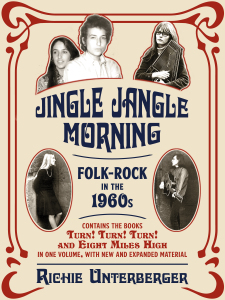
Combines my two-volume history of 1960s folk-rock, Turn! Turn! Turn! and Eight Miles High, into one volume with updated material, including bonus 75,000-word mini-book detailing nearly 200 tracks. Click here or on the cover image above to order through Amazon.
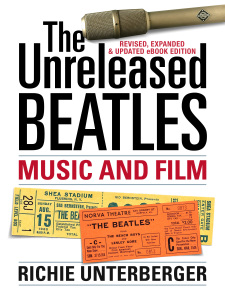
Critical description of all known unreleased Beatles recordings, their most crucial unissued film footage, and more. Updated with 30,000 more words to reflect newly circulating material and additional information that’s come to light since the original edition. Click here or on the cover image above to order through Amazon.
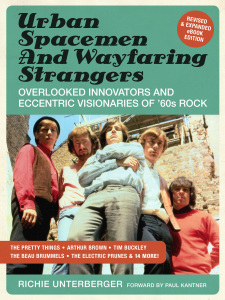
Documents twenty cult rockers from the 1960s. The book features extremely detailed investigation of the careers of greats like the Pretty Things, Arthur Brown, Richard & Mimi Farina, and Tim Buckley. The extensive chapters all include first-hand interview material with the artists themselves and/or their close associates. The ebook version is significantly expanded, revised, and updated from the print version, adding 20,000 words of new material. Click here or on the cover image above to order through Amazon.
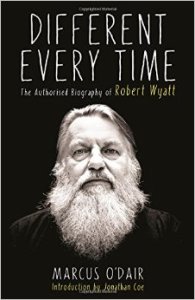
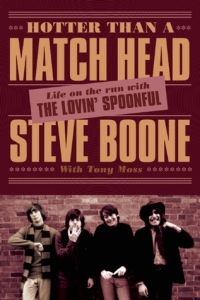
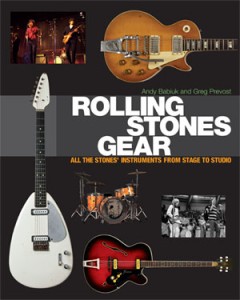
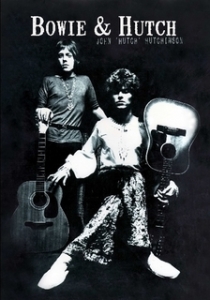
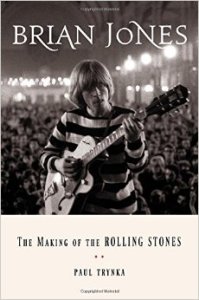
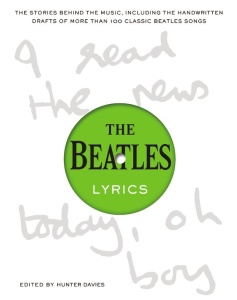
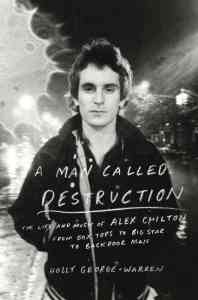
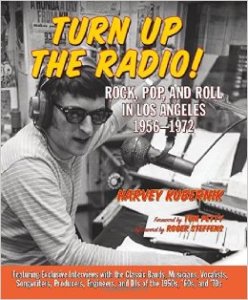
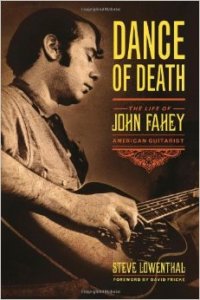
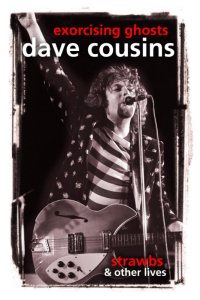
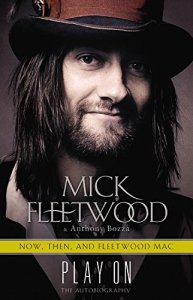
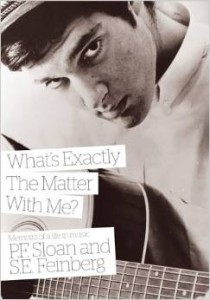
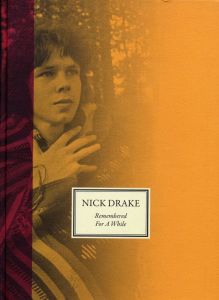
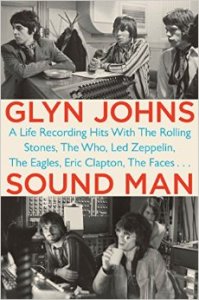
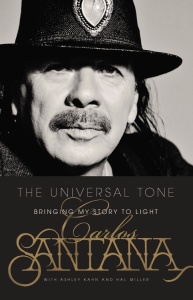
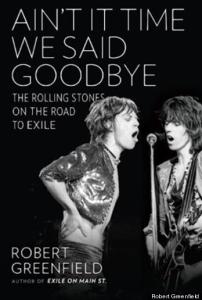
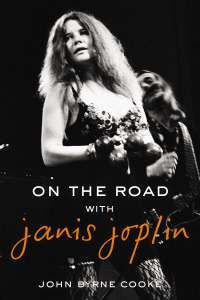
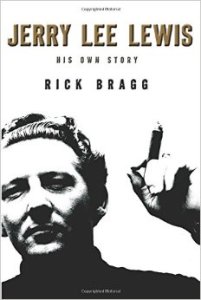
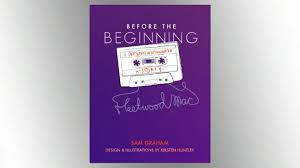
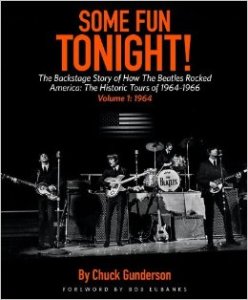
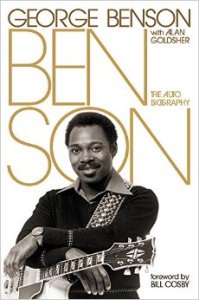
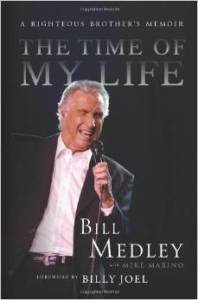
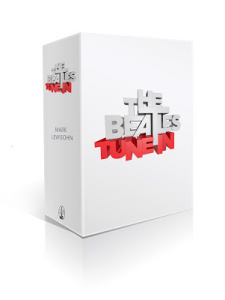
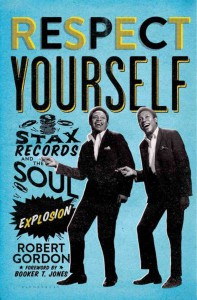
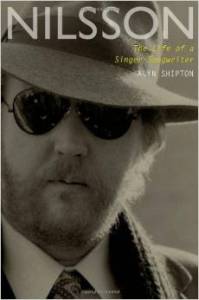
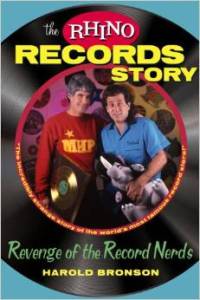
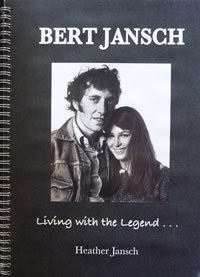
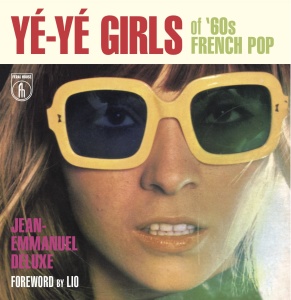
Richie Unterberger goes the extra mile both in interviews and in the articles that follow. He appreciates the difference between pure pop and pure press release and his genuine affection for music of the 1960’s is extraordinary and thoughtful. Rock could use more writers like him!